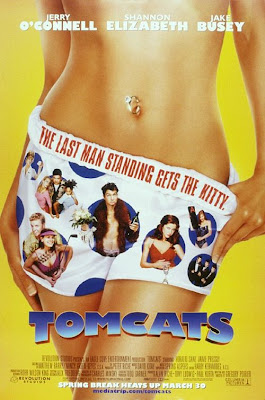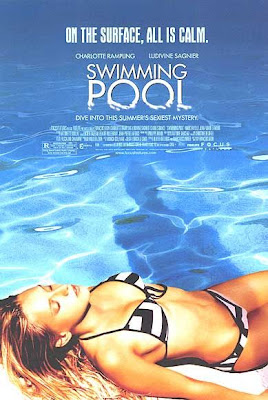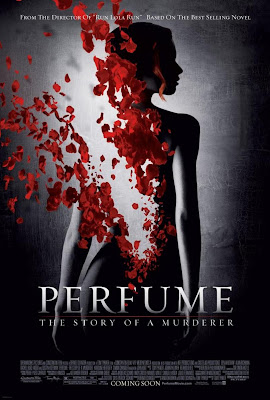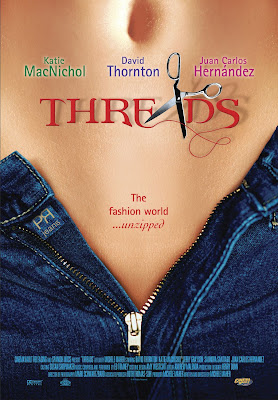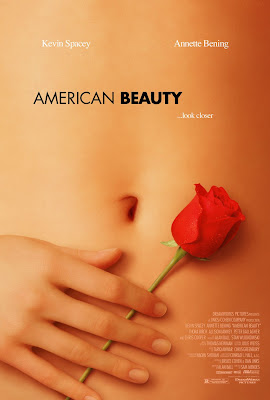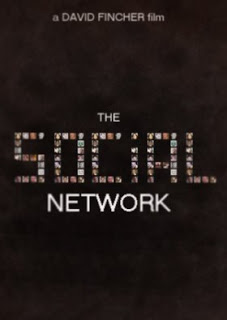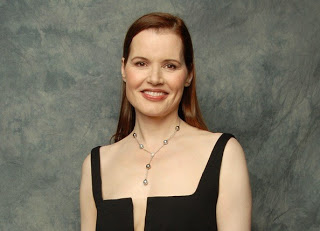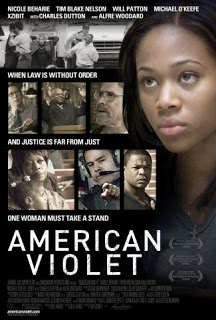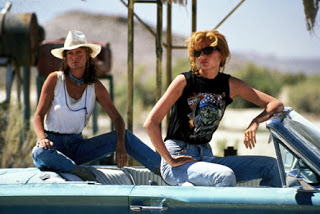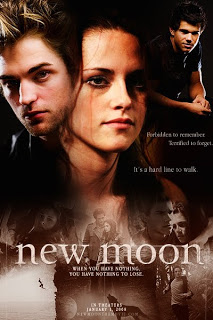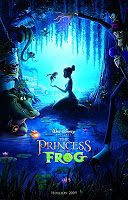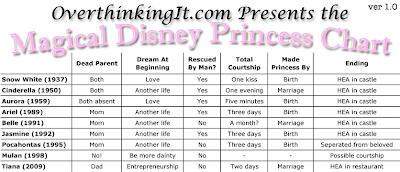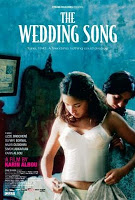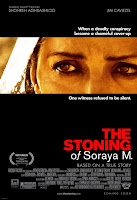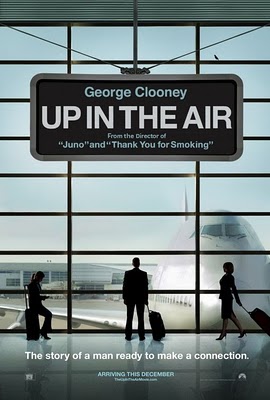Critics have rightly argued that
Twilight gives off a certain metaphor for teen abstinence vibe. Edward desires Bella so much that he refuses to let himself lose control with her. So, the audience gets a couple of scenes of passionate, intense kissing before the two melodramatically pull away from each other and decide to spoon innocently on the bed instead. If they decide to fornicate, after all, Bella could easily end up wounded by Edward’s thrusting vamp-strength or sucked completely dry. Of her blood. By Edward, her lover, who would of course be entirely unable to stop himself from sucking.
(For those of you unfamiliar, the Cullens, who are Edward’s vampire family, only drink the blood of animals to survive, even though they prefer human blood. The other, evil vampires in the movie, murder humans at will. Tsk, tsk.)
Twilight portrayed Bella as the passive object of vamp-Edward’s desire, who needed constant saving by him, from other vamps and from other men and from runaway cars, and who couldn’t make any decisions on her own throughout most of the movie. It shifts a little in the end, when Bella runs off to save her mother, ignoring the advice of the vampires who want to protect her. But by becoming an active subject in that scene, she’s punished, ultimately finding herself in a situation where Edward must save her yet again, literally by sucking poison from her blood.
But New Moon! How did you make me like you? It makes no sense—Bella still ends up in constant need of boy-saving, and she loses her freaking mind for months when Edward breaks up with her, which is not melodramatically showcased at all I swear, ha, by her constant nighttime screaming fits that force even her dad to run to her rescue. For the most part, Bella seems powerless, at the mercy of Edward, at the mercy of her nightmares, and eventually, at the mercy of the evil vampires who want to kill her (as punishment for Edward, who killed a vampire in Twilight).
So why did I find myself finally turning into an uber-fangirl as I watched? Because this time, the film is, dare I say … complicated.
Enter Jacob, Bella’s good friend who just happens to be a werewolf and who just happens to have the most incredible abs I’ve seen since Brad Pitt in Fight Club and who just happens to walk around with his shirt off constantly. And let’s remember the early scene in the school parking lot, where Bella watched as Edward walked toward her in exaggerated slow-motion, hair and button-down shirt blowing wistfully in the breeze, the camera steadied on him as Bella and me and fangirls across the country, yes, I’m going to say it, swoon. And then I started to wonder, “Is Bella entirely powerless?”
Not necessarily.
Because what strikes me most about the men in the Twilight saga is their desire to be looked at by Bella, which (fangirls everywhere unite!) positions Bella as the active subject (the gazer) and the men as passive objects (the gazed at). In the first film, Edward removes his shirt in the sunlight, revealing his twinkling vampire skin, and, upon seeing it, Bella says, “You’re beautiful.” She uses those words again in New Moon, this time with Jacob. When he says something along the lines of, “Why are you looking at me?” She responds with, “You’re sorta beautiful.”
Interestingly, (fangirls everywhere unite!) this direct physical objectification of women doesn’t exist in either movie—for instance, we don’t get traditional scenes of scantily clad girl-vamps trying to seduce men who they eventually eat (played as girl-power when it’s really just male fantasy).
But Bella isn’t without self-scrutiny. In the opening scene of the film, Bella dreams of herself as an old woman with Edward still at her side. That scene reveals an important plotline: fear of aging. Bella sees herself through the eyes of Edward (and therefore, men in general). She sees herself getting older while he stays young and twinkly-beautiful. She says, “You won’t want me when I’m a grandmother.” These feelings stem from living in a society that devalues aging women, and I like that the film explores the issue. Edward’s response? “You obviously don’t understand my feelings for you, Bella.”
Okay, so this is a total fangirl fantasy, right? I mean, a beautiful man loving you for what’s on the inside? I mean, honestly, we’re smarter than that, right? Right?! (Am I kidding?)
Still, in New Moon, even though Bella performs reckless acts, like jumping off a cliff and wrecking a motorcycle, just so faux-Edward will magically appear in some wavy fog-mist to male-dominate and tell her it’s dangerous, she still performs reckless acts. She makes decisions. She risks her life. For love! Ha. Of course, the fact that Edward can no longer save her—he isn’t physically there for real—means Jacob must step in. He does nice things … like taking off his shirt to reveal his Brad Pitt in Fight Club abs and to coincidentally wipe the blood from her forehead. He turns into a werewolf and saves her from one of the bad vamps. He performs CPR. Oh Jacob!
But then, after all this constant being saved by vampire-men and wolf-men, something amazing happens. Bella saves Edward. And even after she saves him, she saves him again, by convincing the Lead Evil Vampire God or Whatever to kill her instead of Edward. He doesn’t kill Bella, of course, because he becomes interested in—check out this awesomeness—her immunity to vampire powers. That’s right: the vampire mind readers can’t read Bella’s mind and the Dakota Fanning vampire can’t inflict mystical pain on Bella just by looking at her. It’s like Bella’s a vamp’s version of a superhero!
Look, is the film flawed? Yes.
The objectification of the men, for instance, also becomes an objectification of The Other (vampire/werewolf). Bella wants Edward to turn her into a vampire so they can be together forever but also because she doesn’t want to age (i.e. become undesirable). Bella can’t function when Edward leaves her, and she risks hurting herself just to get a glimpse of him again. Edward is 106 years old and she’s 18—would that work if the genders were reversed? And, when Edward agrees to turn Bella into a vampire, he insists that they marry first, which plays an awful lot like some creepy, conservative, let’s-get-married-before-I-take-your-virginity nonsense, creating that metaphor for teen abstinence vibe again.
But Bella isn’t a one-dimensional character anymore. In New Moon, she’s much more fleshed out, and perhaps most importantly, she doesn’t have to take her clothes off or perform a certain kind of femininity to get the boy. Edward falls for her because he finds her intriguing: he can’t read her thoughts (see True Blood), and he’s drawn to her because she smells delicious, sex metaphor? Jacob falls in love with Bella after they spend significant time together; it’s not some love-at-first-sight fantasy where he sees Bella, and the camera pans from her feet all the way up her legs and finally to her face where she either smiles coyly or looks down shyly.
As Dana Stevens writes in her review of New Moon:



